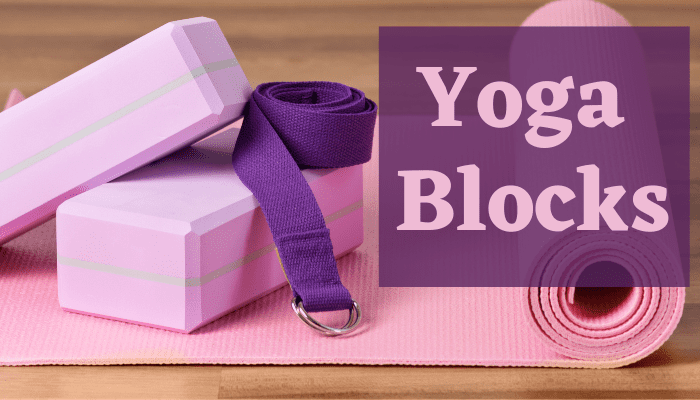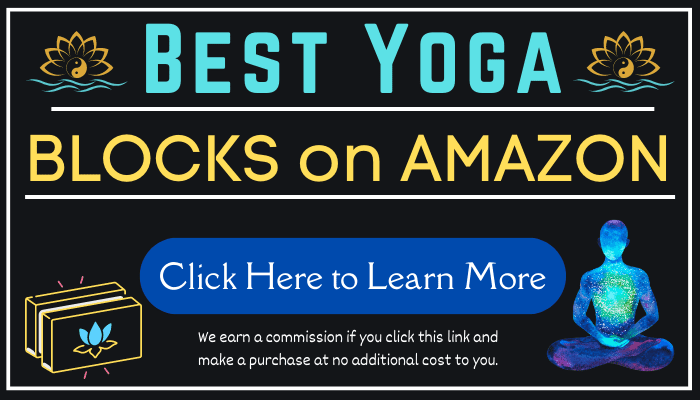
Yoga has been around for centuries. You’ll hear many people say that all you need for yoga is adequate space and an open mind.
But as yoga spread around the world, various props evolved, including the yoga mat and yoga blocks. In fact, the yoga block is older than the yoga mat!
If you go to a yoga studio, they generally have yoga blocks available for people to use. If you don’t want to share equipment or are worried about how clean it is, it might be best to buy your own.
It is recommended to get two yoga blocks; this article will explain why.
The Purpose of Yoga Blocks
Blocks are not always used in yoga. But they are good for people who are just starting or can’t do as much because of pain or an injury.
They also come in handy when learning new poses. You can use the blocks for support and even weight distribution until you can do it properly without them.
In general, yoga blocks bring more balance to poses, promote better alignment, and can introduce more of a challenge to advanced yoga practices.
There is a standard size, but there are also a few different options for people with different body types.
Why Do I Need Two Yoga Blocks?
There is a general misconception that yoga blocks are strictly for beginners.
This is not true, though, because even the most experienced yogis can improve their poses with yoga blocks. Two yoga blocks are essential for even weight distribution and support.
There will be some instances where one yoga block is sufficient, but it is better to purchase two yoga blocks.
This way, when you need to use two, you will have identical blocks that won’t compromise your pose.

Types of Yoga Blocks
There are three types of yoga blocks: wood, cork, and foam.
Due to the different materials, the blocks vary in functionality. And so the type you choose depends on the variation of yoga you do and its affordability.
Wooden Yoga Blocks
Wooden yoga blocks look beautiful and are incredibly sturdy, given their weight. However, they tend to slip if you have sweaty hands or if they are on slippery floors.
They can have curved or rounded edges, making them easier to hold, but they aren’t too comfy if you place them under your back for support.
Wooden yoga blocks are expensive but last much longer than the other two types of blocks. If you choose this block type, you may need additional padding to make it more comfortable.
Cork Yoga Blocks
Cork blocks are similar to wooden ones but much lighter and softer. This makes them more comfortable if you place them under your back for support.
Plus, they are less slippery than wooden yoga blocks.
Cork blocks are porous, soaking up any dampness they come in contact with. If you sweat a lot during yoga, the block will absorb that, along with any odors.
You will have to clean the block often, and it will eventually start to crumble or pieces will start to break off as it gets more brittle.
Foam Yoga Blocks
Foam yoga blocks are probably the most popular type of yoga block. This is because they are the cheapest and easiest to clean.
Foam blocks also last longer than the cork blocks and are much more comfortable than the other two.
However, foam blocks can feel less sturdy when you use them because they are so light and soft. This makes them better suited to gentle yoga practices and not for active poses.
Cork vs. Foam Yoga Block
Although the cost of wood makes it unappealing to most yoga practitioners, it is good for the environment and stable. It’s also pretty cumbersome to carry around a pair of wooden blocks!
Cork and foam each have their advantages and disadvantages. Ultimately, the choice comes down to personal preference. Cork is more expensive than foam, and you will have to replace it more often. However, it is the more eco-friendly choice of the two.
Foam blocks are cheaper, last longer, and are more comfortable. However, you will have to clean them often, and they may be less stable when practicing active poses. In addition, they are not eco-friendly and can get damaged easily.
Are Yoga Blocks Necessary?
Beginners often question whether they need yoga blocks or whether it is just a ploy to buy sporting equipment.
However, yoga blocks are helpful whether you use them at home or in a yoga class.
If unsure whether you need them, try getting through your yoga poses without them. Then, try using one in class or a suitable substitute at home to see if it makes the poses easier.
Appropriate substitutes would be firm cushions, a foam roller, or even a stack of books.
This will allow you to see if the extra support can help you with your poses. It will also give you an idea of the best block type.
Final Words
Yoga blocks are props that can help beginners and experienced yogis alike. They provide additional support and stability and can even introduce more of a challenge to your poses.
Investing in two yoga blocks is better than having just one. This is because some poses require two blocks, and you want to ensure they are the same.
The type of yoga block you choose will depend on the type of yoga you practice and your personal preference. Aim to pick a block that meets these criteria within your budget, and you will be set!

Before you go please click on the following link to learn how often you should do yoga to see results! Or check out the links below.
You may also be interested in: 1. Is Yoga Enough to Stay Fit? 2. Yoga Mat vs Exercise Mat 3. What Size Yoga Mat Do You Need? 4. Is It Better to do Yoga Before or After a Workout? 5. Yoga Poses For Beginners [Mountain Pose; Tadasana]




